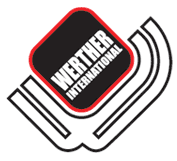Industrial pressure washers are machine that are designed to provide efficient cleaning solutions. These machines are used to tackle tough cleaning jobs. The high pressure levels are perfect to clean the stubborn deposits which are old or some different mixtures of debris.
Dirt deposits always tend to harm industrial equipment. Apart from that, it can be even harm health of workers. Industrial places have more grime & dirt & sometimes they tend to solidify, making them hard to clean. Even strong chemicals can’t remove deposit fully.
In these tough conditions, pressure washers come in handy. There are 3 types of industrial pressure washers,  Steam professional, Cold water professional & Hot water professional. All these pumps are with ceramic plungers with brass head forged with anti corrosion. All motors are thermal protected.
Steam professional, Cold water professional & Hot water professional. All these pumps are with ceramic plungers with brass head forged with anti corrosion. All motors are thermal protected.

In these pressure washers, water is made to come out from a hose in a strong stream because these engine pumps are electric or gasoline powered. These pumps help build pressure by compressing water. Hoses have trigger option which helps to adjust the flow of water. Gasoline pressure washers are more powerful than electric powered washers. Pressure Washers with higher PSI & GPM means greater pressure & more power. These machines have various features like rotating nozzles to cover larger area, rotating brushes, detergent attachment, etc.
There are also lower pressure level pressure washers with low flow rate for lighter cleaning jobs. Cold water washer’s don’t require degreasing & are less expensive as they don’t have a heating component. All 3 kinds of pressure washers features are also available in one unit to suit your cleaning needs.
Werther has come up with all these industrial pressure washers. Aquastar 120H - Hot (Steam) Professional, Aquastar 120C – Cold Water Professional, Aquastar 110H – Hot Water Semi-Professional. Browse our collection & select your Industrial Pressure Washers to meet your industrial demand.








